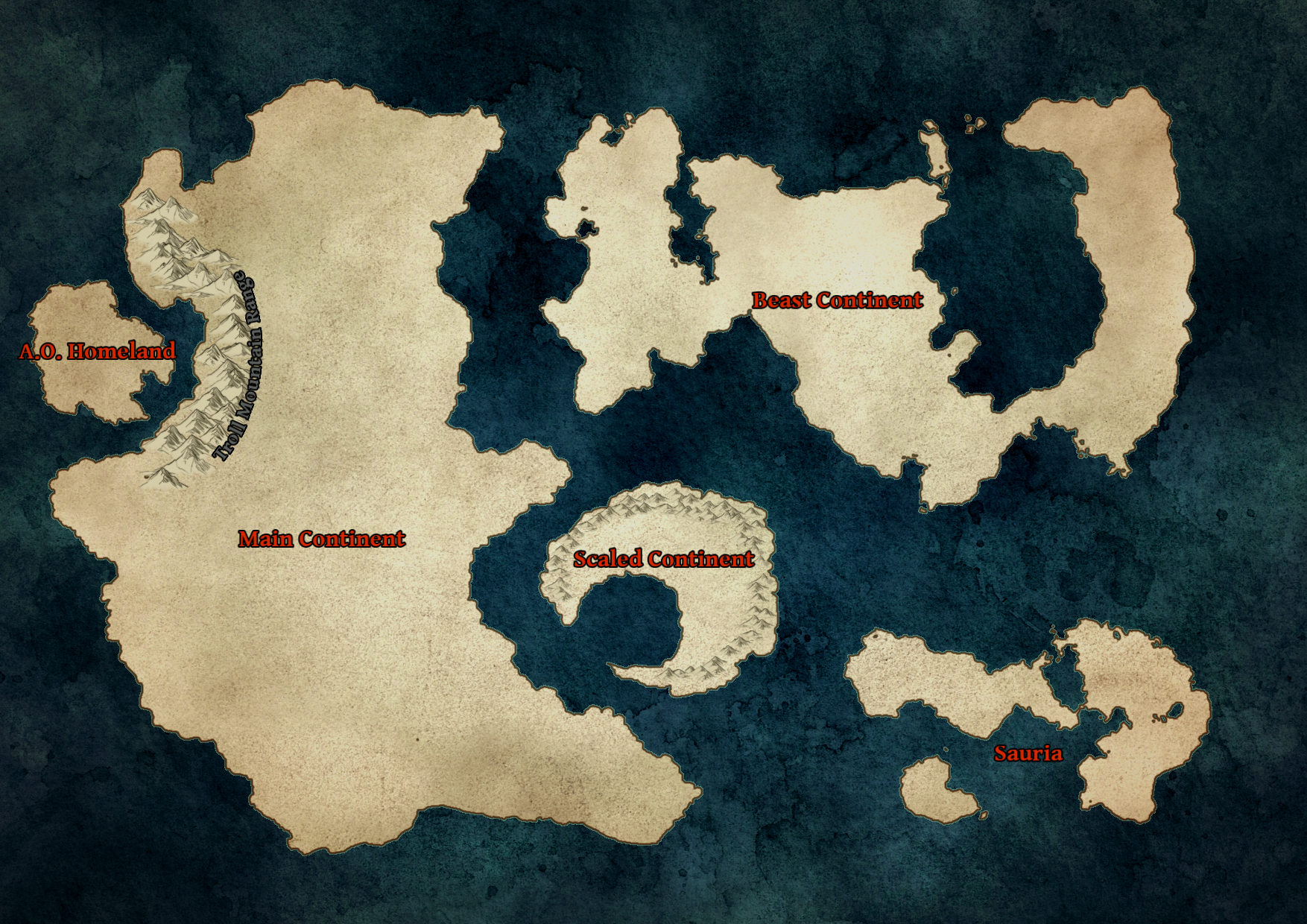Sea Dragon, General
Also known as Sea Orcs, or Sea Serpents.
Basic Information
Anatomy
Sea dragons are possibly one of the most diverse and numerous dragonoids in terms of species. Despite being intensely studied, there is believed to be dozens, if not hundreds of undocumented species. They come in many sizes, from tiny to massive behemoths.
Sea dragons have a serpentine body, and lack the wings that most other dragonoids have. Instead they have fin-like appendages and a spiny frill along their back to help propel themselves through the water.
They have snake-like heads with powerful jaws full of long, interlocking teeth.
Biological Traits
Must surface to breathe.
Genetics and Reproduction
Depending on species, Sea Dragons may either lay eggs on land or give birth to live young in the water. Eggs of Sea Dragons tend to be round like sea turtle eggs, and depending on the species a clutch can contain 20-100 eggs or young. Hatchlings are very small when they are born, and few will survive the trials to reach adulthood. While most species can grow to adulthood very quickly, some can take decades.
Ecology and Habitats
Sea Dragons are found in just about every deep lake, river, and sea. The bigger species are able to dive to great depths.
Dietary Needs and Habits
As a whole, Sea Dragons prey on fish, sharks, seals, shellfish, whales, etc. However just because they themselves are predators does not mean that they themselves are safe from being eaten. Large sharks, whales, and the Kraken have no qualms eating small or young Sea Dragons.
Biological Cycle
Most species migrates based on season and food availability.
Additional Information
Social Structure
Most species are solitary, though a few species live in pods.
Uses, Products & Exploitation
The larger species have been known to attack ships, with some attacks having become legends as generations pass. Many a sailor both fears and respects them. Their teeth are prized among sailors as trinkets, and are often decorated with carvings.
It is impossible to keep all but the smallest species in captivity.
Geographic Origin and Distribution
Found worldwide.
Average Weight
4,500lbs
Average Length
Length: 10-300ft
Body Tint, Colouring and Marking
Typically has a dark upperside, and light underside
Remove these ads. Join the Worldbuilders Guild



Comments